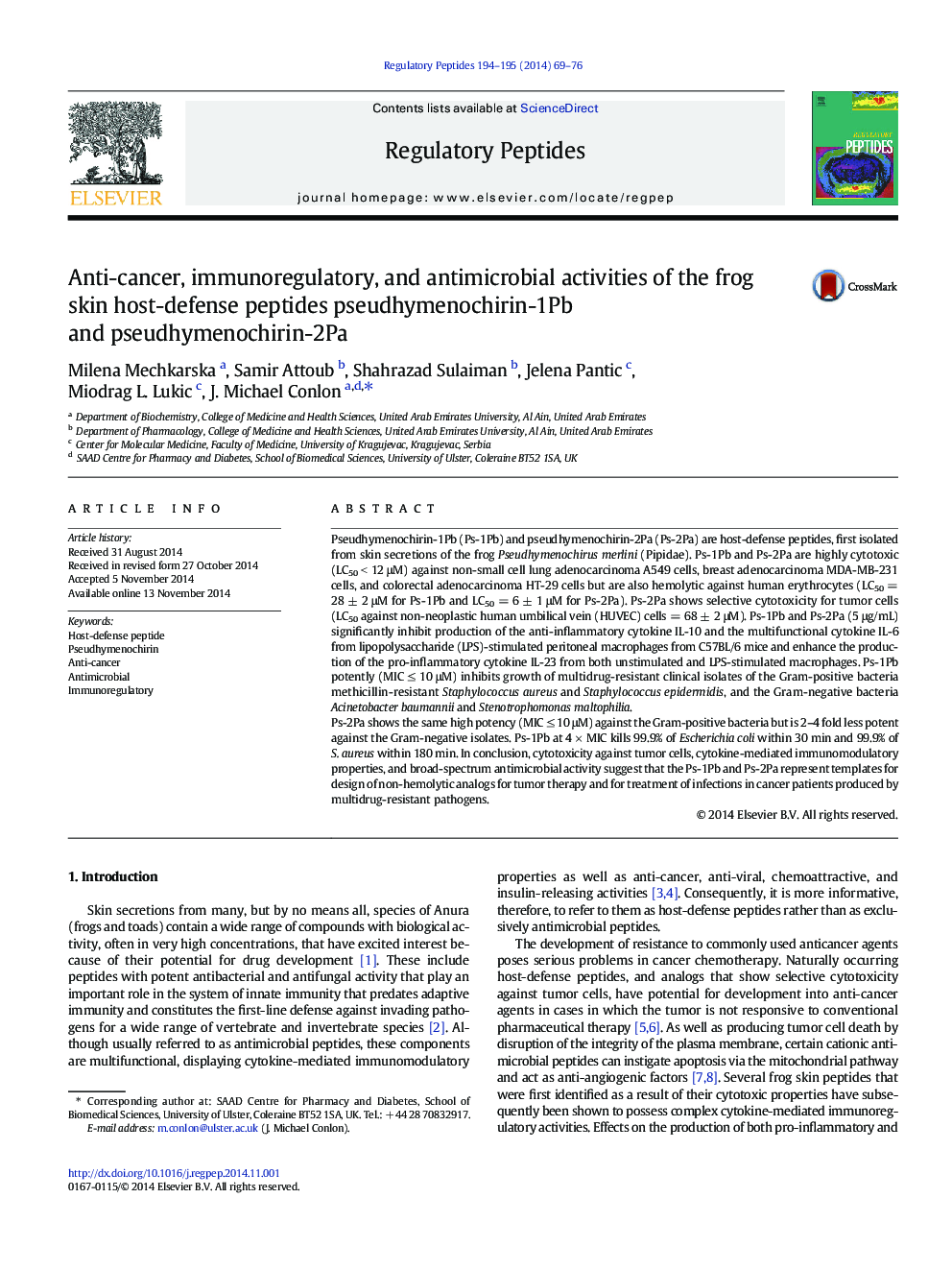| Article ID | Journal | Published Year | Pages | File Type |
|---|---|---|---|---|
| 2022376 | Regulatory Peptides | 2014 | 8 Pages |
•Ps-1Pb and Ps-2Pa show potent in vitro cytoxicities against several human tumor cell lines.•Ps-1Pb and Ps-2Pa inhibit production of IL-10 and IL-6 by macrophages from C57BL/6 mice.•Ps-1Pb and Ps-2Pa enhance production of IL-23 by macrophages from C57BL/6 mice.•Ps-1Pb shows potent, broad-spectrum antimicrobial activity against clinical isolates of pathogenic bacteria.
Pseudhymenochirin-1Pb (Ps-1Pb) and pseudhymenochirin-2Pa (Ps-2Pa) are host-defense peptides, first isolated from skin secretions of the frog Pseudhymenochirus merlini (Pipidae). Ps-1Pb and Ps-2Pa are highly cytotoxic (LC50 < 12 μM) against non-small cell lung adenocarcinoma A549 cells, breast adenocarcinoma MDA-MB-231 cells, and colorectal adenocarcinoma HT-29 cells but are also hemolytic against human erythrocytes (LC50 = 28 ± 2 μM for Ps-1Pb and LC50 = 6 ± 1 μM for Ps-2Pa). Ps-2Pa shows selective cytotoxicity for tumor cells (LC50 against non-neoplastic human umbilical vein (HUVEC) cells = 68 ± 2 μM). Ps-1Pb and Ps-2Pa (5 μg/mL) significantly inhibit production of the anti-inflammatory cytokine IL-10 and the multifunctional cytokine IL-6 from lipopolysaccharide (LPS)-stimulated peritoneal macrophages from C57BL/6 mice and enhance the production of the pro-inflammatory cytokine IL-23 from both unstimulated and LPS-stimulated macrophages. Ps-1Pb potently (MIC ≤ 10 μM) inhibits growth of multidrug-resistant clinical isolates of the Gram-positive bacteria methicillin-resistant Staphylococcus aureus and Staphylococcus epidermidis, and the Gram-negative bacteria Acinetobacter baumannii and Stenotrophomonas maltophilia.Ps-2Pa shows the same high potency (MIC ≤ 10 μM) against the Gram-positive bacteria but is 2–4 fold less potent against the Gram-negative isolates. Ps-1Pb at 4 × MIC kills 99.9% of Escherichia coli within 30 min and 99.9% of S. aureus within 180 min. In conclusion, cytotoxicity against tumor cells, cytokine-mediated immunomodulatory properties, and broad-spectrum antimicrobial activity suggest that the Ps-1Pb and Ps-2Pa represent templates for design of non-hemolytic analogs for tumor therapy and for treatment of infections in cancer patients produced by multidrug-resistant pathogens.
